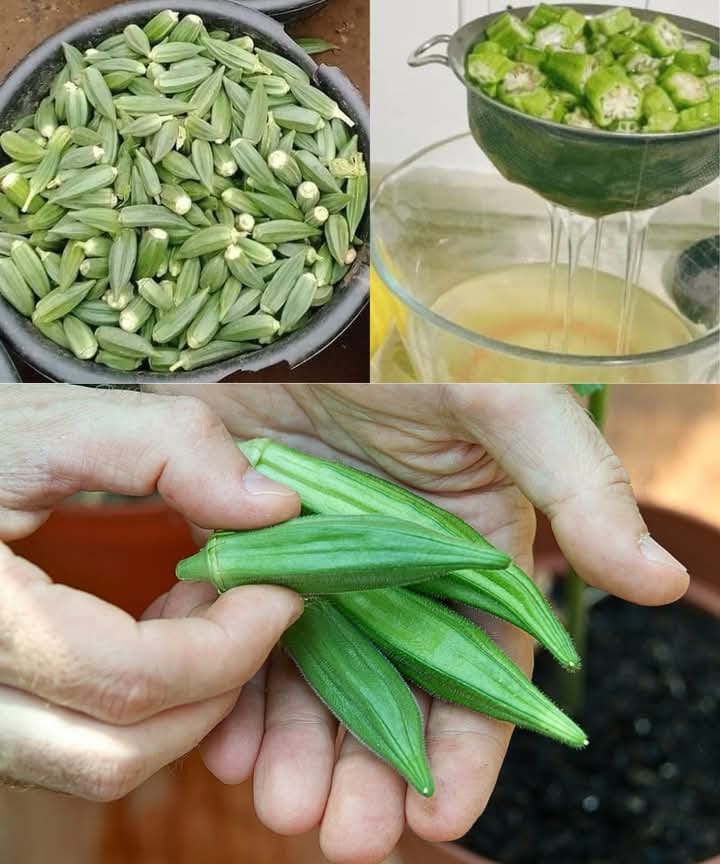ADVERTISEMENT
#### 6. **Health Benefits of Okra**
In addition to being nutritious, okra provides a range of health benefits:
– **Boosts Immunity:** The high levels of vitamin C in okra support immune function by promoting the production of white blood cells and fighting off infections.
– **Heart Health:** Okra is known to support cardiovascular health due to its potassium and magnesium content, which help lower blood pressure and improve blood circulation.
– **Blood Sugar Regulation:** Okra has been shown to help regulate blood sugar levels, making it an excellent choice for individuals with diabetes. Studies suggest that okra may help manage blood sugar by slowing the absorption of sugar in the intestines.
– **Anti-Inflammatory Properties:** Okra contains antioxidants that help reduce inflammation in the body, which is linked to a variety of chronic conditions such as heart disease and arthritis.
#### 7. **Okra’s Role in Weight Loss**
Okra can be a great addition to a weight loss diet because it is low in calories and rich in fiber. The fiber content not only helps with digestion but also promotes feelings of fullness, reducing the likelihood of overeating. Additionally, the low-calorie, high-water content of okra makes it a perfect food for staying hydrated while controlling calorie intake.
Because okra is nutrient-dense, it provides essential vitamins and minerals without adding excess calories, making it an ideal food for those looking to manage their weight in a healthy and balanced way.
#### 8. **Okra’s Cultivation and Growing Tips**
Okra thrives in warm climates and is relatively easy to grow. It is best planted in well-drained, fertile soil with plenty of sunlight. For gardeners interested in growing okra, here are some tips to ensure a healthy crop:
– **Planting:** Okra seeds should be planted after the danger of frost has passed, as the plant is very sensitive to cold temperatures. Seeds should be spaced about 12 to 18 inches apart to allow room for growth.
– **Watering:** Okra requires consistent moisture, but overwatering should be avoided, as it can lead to root rot.
– **Harvesting:** Okra pods grow quickly and should be harvested while still tender, typically 2-3 inches in length. If left on the plant too long, the pods can become tough and woody.
Okra is often grown in home gardens because it can yield a large number of pods in a small space and is quite hardy in the right conditions.
#### 9. **Different Varieties of Okra**
Though the green variety is the most common, okra comes in several different colors, including red, purple, and white. The taste and texture of these varieties are similar to the traditional green okra, though some people find that the red and purple varieties tend to be slightly more tender.
The most commonly available okra in grocery stores is the green variety, which is typically harvested when the pods are young and tender. However, for those seeking a different aesthetic or flavor experience, trying out different varieties of okra can provide a fun and unique twist on your meals.
#### 10. **Okra in Global Cuisines**
Okra is found in a variety of global cuisines, each with its unique preparation and flavor profile. Some notable examples include:
– **Southern U.S.:** Okra is a key ingredient in gumbo, a traditional Southern stew made with seafood, sausage, and vegetables. It is also often fried or pickled.
– **Middle Eastern and Mediterranean:** Okra is a staple in dishes like “bamieh” (a stew made with tomatoes, onions, and garlic) and “dolma” (stuffed vegetables).
– **India:** Known as “bhindi,” okra is often stir-fried with spices like turmeric, cumin, and coriander, and served as a side dish or main course.
– **Africa:** Okra is featured in various stews and soups throughout Africa, such as the Nigerian “okra soup,” which is served with fufu.
In each of these regions, okra is incorporated into dishes that are flavorful, hearty, and satisfying.
#### 11. **Culinary Pairings with Okra**
Okra pairs well with a variety of flavors, making it adaptable to numerous culinary styles. Here are some popular pairings:
– **Spices:** Okra’s neutral flavor makes it an excellent base for bold spices. It pairs well with cumin, coriander, turmeric, paprika, garlic, and chili.
– **Tomatoes:** The sweetness and acidity of tomatoes complement the mild flavor of okra, especially in stews and sauces.
– **Meats and Seafood:** Okra is often cooked alongside meats like chicken, beef, and pork, as well as seafood like shrimp and fish. The mucilage helps bind the ingredients together in a hearty dish.
– **Rice and Grains:** Okra is frequently paired with rice in dishes like gumbo, where the vegetable acts as a thickener for the stew.
#### 12. **Sustainability and Environmental Benefits**
Okra is a hardy and low-maintenance plant that requires relatively little water and minimal chemical intervention compared to other crops. This makes it an environmentally friendly vegetable to grow, particularly in regions where water conservation is a concern. Additionally, okra’s resilience in hot climates means it can be grown in places with limited agricultural resources, providing a sustainable food source for many communities.
### Conclusion
Okra is much more than a quirky vegetable with a unique texture. It is a versatile, nutritious, and globally beloved food that offers numerous health benefits. From its rich history and cultivation to its culinary uses and health advantages, okra continues to prove itself as a valuable ingredient in kitchens worldwide. Whether you’re looking to diversify your meals or improve your health, incorporating more okra into your diet is a fantastic choice. So, next time you see this vibrant green vegetable in the produce section, consider picking it up and exploring the wonderful world of okra.
—
This article is informative and rich in content, covering everything from history to health benefits and culinary tips. It provides an extensive view of okra, ensuring readers leave with a full understanding of this vegetable and its role in diverse cuisines.
